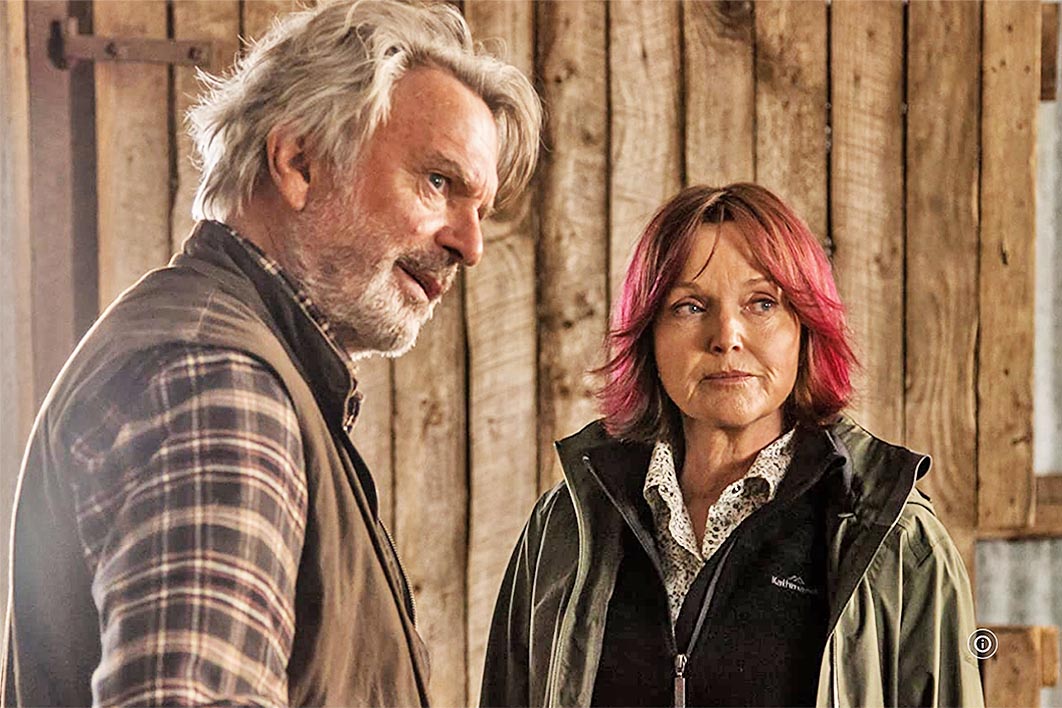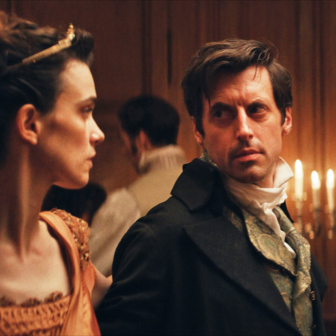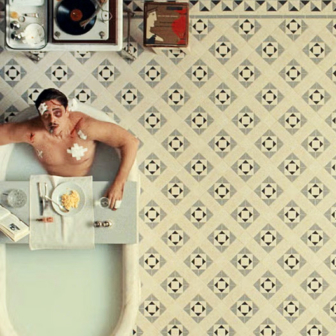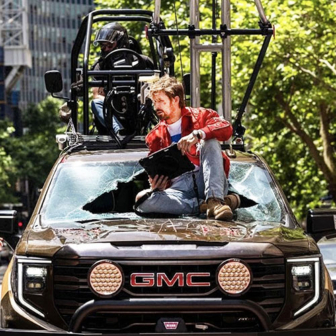When the Icelandic film with the same name (at least in translation) and premise as Jeremy Sims’s Rams was released in 2015, I was in the wrong country at the wrong time — Britain, then back in Australia — and missed its screenings in both places. If I read anything about it at the time, I’ve forgotten, so when I saw the Australian film version I came to it with no baggage at all.
Very often there seems to be an expectation that the “remake” will be inferior to its antecedent, and sometimes — think of the disastrous telemovie remake of Brief Encounter — this is the case, but on the whole it’s as well to keep an open mind. Sims’s film freely acknowledges its debt to its Icelandic predecessor, which is quite daring considering the high regard in which that film is held. Seeing Rams without any echoes except the title, I was utterly absorbed by this story of two sheep-farming brothers who live on adjacent Western Australian properties but haven’t spoken for years. I’d go so far as to call it the best Australian film in recent memory.
The relationship between the two brothers — who communicate only via messages conveyed by an intelligent sheepdog — is the narrative core of the film. Colin (Sam Neill) lives in a weatherboard house, where he maintains a solitary but orderly lifestyle, preparing adequate meals, talking affectionately to his sheep, and expressing much admiration for his prize ram. Les (Michael Caton), a scruffy alcoholic, lives in the old stone family house, which is now pretty squalid as a result of his slovenly ways. They each have predictably contrasting shearing sheds, which in Clayton Jauncey’s production design tell us still more about their longstanding differences.
Their two properties are separated by a barbed wire fence, but that’s only a visual reminder of their divisions. The real basis for the contention between them is that their parents willed the property to Colin, who has allowed Les to live on the other side of the fence and keep his sheep there.
Then an event occurs that upends their lives. A ram-judging show — obviously an annual event that brings out the townsfolk in friendly competition — is held in the nearby Western Australian town of Mount Barker (where much of the film was actually shot). Les’s ram wins, but the longstanding conflict between the brothers takes a new turn when Colin, without undue malice, tells the judge that Les’s ram is suffering from OJD, a serious bowel infection in sheep. If proved, this will have a massive effect, not just on Les’s sheep but on sheep throughout this pastoral district, all of which will have to be destroyed to avoid widespread infection.
What we now see is not just the intensification of the brothers’ feuding but also a grave threat to the livelihood of the surrounding community. Sims, working from Jules Duncan’s screenplay, deals skilfully with this interaction. Two outsiders now make their presence felt in the brothers’ lives. One is Kat, “the Pommy vet” as she is described (perhaps to account for her being played by British actress Miranda Richardson), who is sympathetic to a community suffering from what she calls a “cruel blow.” The other is De Vries (Leon Ford), a representative of the agriculture department, who strides around in suit and tie, making smart-alec comments about decontamination processes, peppering his instruction with what he takes to be witty sallies, showing no apparent concern for what the disease means to the brothers or the community, and patronising people he clearly regards as his inferiors.
While there are some grim moments to do with getting rid of the sheep (well, not quite all of them, but to say more would be to risk spoilers), this is not a film that relishes that kind of violence, and there is real poignancy in the scenes that follow. It is indeed a humane film, told with warmth (but not sentimentality) and revealing real humour as it deals with this crisis in the brothers’ lives.
Jeremy Sims maintains an impressive tonal control as events unfold in a landscape at first greenly beautiful in spring, then potently arid and fire-threatened in summer. Steve Arnold’s superb cinematography endows these vistas not only with great visual appeal but also with a dramatic sense of how they constrain the lives of those living there.
As Colin, Sam Neill achieves a persuasive performance both by his quiet observation of what is happening, either between him and Les, for instance, or as he sits with other members of the community in the local pub, and in his dealings with Kat and De Vries. Neill, as well as having considerable overseas success, has been a stalwart presence in Australian films for more than forty years, emerging as one of those stars who seems to inhabit a role without any hint of artificiality.
As for Kat and De Vries, they make a telling impression as outsiders who go about doing serious jobs with very different attitudes. Perhaps Richardson was cast as Kat to help the film at the British box office — as well she might, having been a presence to reckon with in British films since playing Ruth Ellis, the last English woman to be hanged, in 1985’s Dance with a Stranger. Leon Ford, as De Vries, has perhaps his best role to date, imbuing the representative bureaucrat with a persuasive sense of his self-importance.
The last word about the cast must be for Michael Caton’s Les. Caton, forever associated with “dreamin” in The Castle, worked to great effect with director Sims in Last Cab to Darwin. Here he repeats that success, making Les both convincingly annoying and, after decades of self-indulgent bad temper, capable of finding more to himself — or in himself — when the challenge arises. Between them, he and Neill embody a significant slice of Australian film history.
How Rams compares with its Icelandic forebear, Hrútar, I of course cannot tell, but it stands impressively on its own resources, before and behind the camera. •




